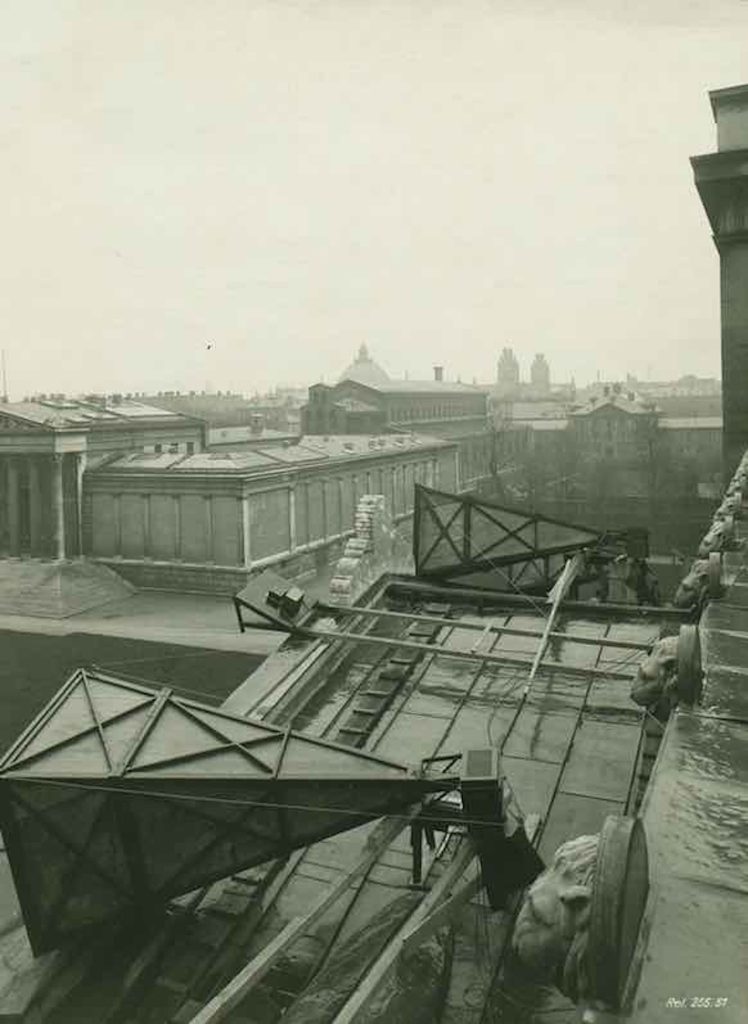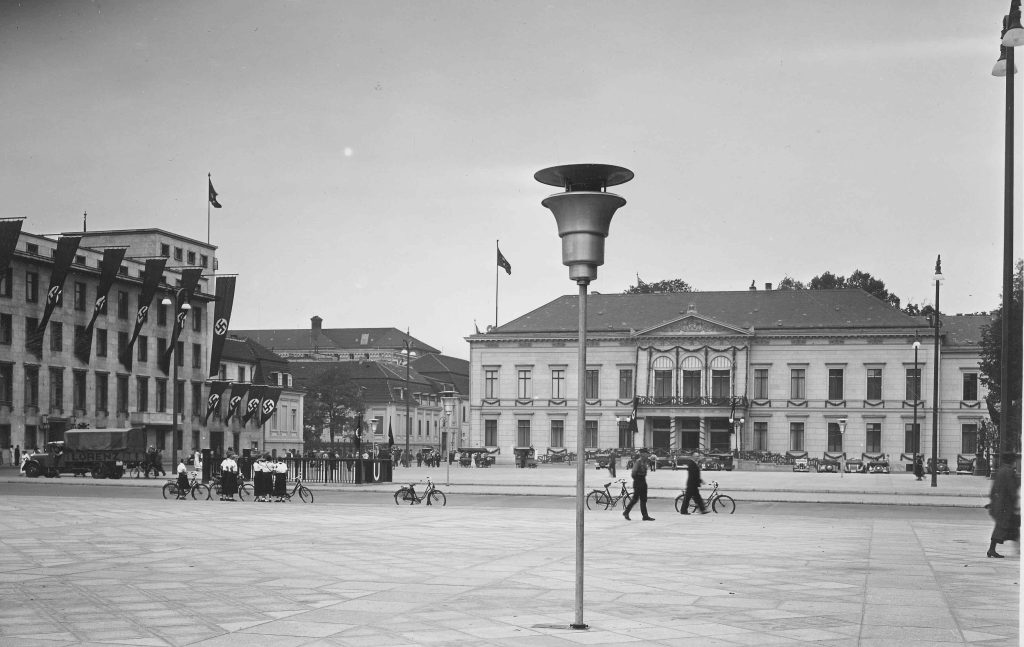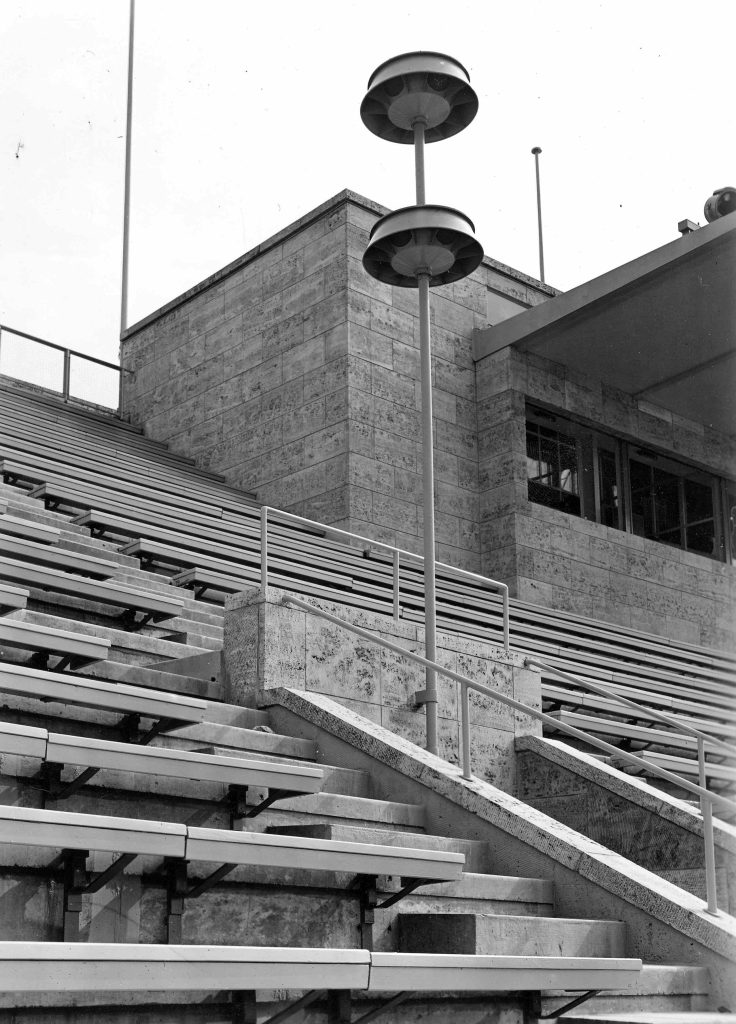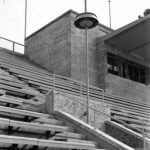Contributor Essays
Large Sound Amplification Systems in Interwar Germany: Siemens and Telefunken
by Roland Wittje
January 23, 2020
In the 1920s, electrical companies in Europe and North America started to develop large sound amplification systems for a variety of public spaces, such as public squares, town halls, theaters, cinemas, sports arenas, and churches. These large amplification systems differed in design to accommodate the various soundscapes, but they all required powerful radio tube amplifiers and large loudspeakers.
In Germany, the Siemens and Halske company pioneered such systems in the 1920s. In 1930, Siemens and the Allgemeine Electricitäts-Gesellschaft (AEG) transferred most of their electroacoustics research and development to the jointly owned Telefunken-Gesellschaft für Drahtlose Telegraphie, making Telefunken the main producer of large sound amplification systems in the 1930s.
The development of loudspeakers and amplifiers at Siemens originated directly in the company’s activities during the First World War. The physicist Hans Riegger had worked for Siemens on underwater sound signaling systems for submarine communications, designing electrically driven sound transmitters—basically large underwater loudspeakers that transmitted sound signals of just one frequency into the ocean. After the war, Riegger worked on a general theory of sound transmitters and developed an electrodynamic loudspeaker that he called the “Blatthaller.” The Blatthaller had a flat piston membrane, similar to the sound transmitters for underwater telegraphy. Unlike underwater sound transmitters, which operated only at a single frequency, the Blatthaller and other loudspeakers needed to transmit the entire range of audible frequencies, and thus depended on amplifier tubes and circuits that could amplify the weak signals of microphones without too much distortion. During the war, Walther Schottky had worked for Siemens on screen grid vacuum tubes that enhanced the performance of the Siemens tubes considerably. From about 1920 onwards, Schottky and Erwin Gerlach set to work on a loudspeaker in which a current-carrying aluminum ribbon was suspended in the gap of a ring-shaped electromagnet. The resulting ribbon speaker design, with a light membrane that did not exhibit any significant selectivity for certain frequencies or produce any reverberation or upper harmonics, improved the reproduction of speech and music.
Gerlach and Schottky developed their loudspeaker at the Siemens Central Laboratory. The lab was independent of Siemens Research Laboratories, where Riegger worked. The competition among researchers at different laboratories within Siemens resulted in very different microphone and loudspeaker designs. Riegger, Gerlach, and Schottky presented their loudspeakers at a meeting of the German Physical Society in Innsbruck in 1924.
The final test for the Blatthaller and the ribbon speaker was the opening of the new premises of the Deutsches Museum in Munich on May 7, 1925. This gave Siemens a welcome opportunity to test its systems and compare its different microphones and loudspeakers, but also to generate first-rate publicity. The ribbon speakers were installed only on the roof of the Propylaea gate at Königsplatz; Blatthaller speakers were used at several other locations as well.

The sound quality of the ribbon speakers met expectations, but the ribbons themselves proved insufficiently durable—they ripped apart and had to be replaced frequently. The ribbon speaker was abandoned, though the ribbon microphone, based on the same concept, went into production and the principle is still in use. Siemens continued to develop and market the Blatthaller until 1930 and used it for various amplification systems, for example in their sound trucks. However, the Rice and Kellogg electrodynamic cone loudspeaker, introduced by General Electric in 1925 and produced by Siemens under license agreements, was the more successful design and replaced the Blatthaller after 1930.
The transfer of electroacoustics activities from Siemens and AEG to Telefunken in 1931 coincided with the Great Depression. The Nazi party used sound amplification in its political rallies even before it seized power in 1933, renting Siemens sound trucks in 1932 to amplify speeches, songs, and party slogans. After January 1933, large loudspeaker systems became an important instrument in the staging and orchestration of Nazi rallies, such as the gatherings on the Tempelhofer Feld and the Nuremberg party congresses. Telefunken operated a large open-air testing laboratory for its loudspeakers in Groß Ziethen, just outside Berlin.
The large amplification systems developed at Telefunken in the 1930s were very different from the Siemens loudspeaker systems of the 1920s. Instead of concentrating large loudspeakers at a central location, Telefunken operated with a network of dispersed loudspeakers, placed about 60 meters apart. Audibility tests with a large 800 W Siemens Blatthaller speaker, installed on the Berlin Radio Tower in 1930, had shown that the speaker could be heard several kilometers away, but that range and intelligibility depended crucially on atmospheric conditions, which could not be controlled. A further disadvantage of large centralized loudspeakers was that the sound volume was unbearable for those in close proximity to the speakers.
Additionally, a single large loudspeaker installed next to the orator caused a delay in the sound reaching the audience. Giving commands in this way meant that the movements of the mass audience, which could be up to a kilometer deep, appeared in waves. This was not acceptable for the orchestration of rallies—perfect synchronization was required between the masses and their leaders, for which sound was simply too slow. Instead, a system of smaller speakers spread around the site enabled sound to travel faster than the speed of sound, enabling the desired synchronization. Telefunken developed a whole range of such speakers for outdoor use, the most common of which was the round Pilzlautsprecher (mushroom speaker) mounted on poles.

The Nazi regime made the 1936 Olympic Games, held in Berlin, into an unprecedented media and propaganda spectacle, for which Telefunken delivered an even more elaborate sound amplification system. Although dispersed loudspeakers successfully brought the sound more or less simultaneously to all participants of the mass event, they also interfered with each other and created echoes. To avoid this effect, Telefunken developed the Löschstrahler (extinguishing loudspeaker).

Two identical loudspeakers were mounted on top of each other on one pole. They were switched in opposite phases and were intended to extinguish each other’s sound for low frequencies at distant points. The extinguishing speakers seem to have been used only at the Olympic stadium, indicating that their acoustic performance was unsatisfactory and that their further development was abandoned.
The sales material for Telefunken sound amplification systems became an extension of Nazi political propaganda. In 1938, a Telefunken pamphlet reprinted an article from the Nazi radio journal NS-Funk, claiming that “in the New Germany, radio technology is not a science that gives material to a few insiders to broaden their knowledge and play around with it by means of technology. To the contrary: since the takeover of power by the National Socialist government, radio broadcasting has been carried into the nation. It has become the mediator between state leadership and the population. It has become the direct shaper of the experience of the German people’s grand celebrations.” In National Socialist Germany, then, listening to the radio was to be not an individual experience, but a communal experience of the German nation. Telefunken delivered the technological means for that experience.
To orchestrate the acoustic presence of the Nazi state in public, Telefunken developed amplification systems for Gemeinschaftsempfang (communal radio reception). A 1934 sales pamphlet for these systems shows an imaginary German town with loudspeaker systems set up in the town hall, on the town square, in the school, in the factory, and on the sports ground. As well as communal broadcasting in factories and public buildings, the Nazi propaganda department worked on plans to occupy public open spaces with a system of loudspeakers on poles, located at strategic sites. In the end, Breslau (today’s Wrocław) was the only city to receive one hundred speaker-equipped poles, in 1938—just before the war economy irreversibly changed priorities for the electrical industry’s production capacities.






